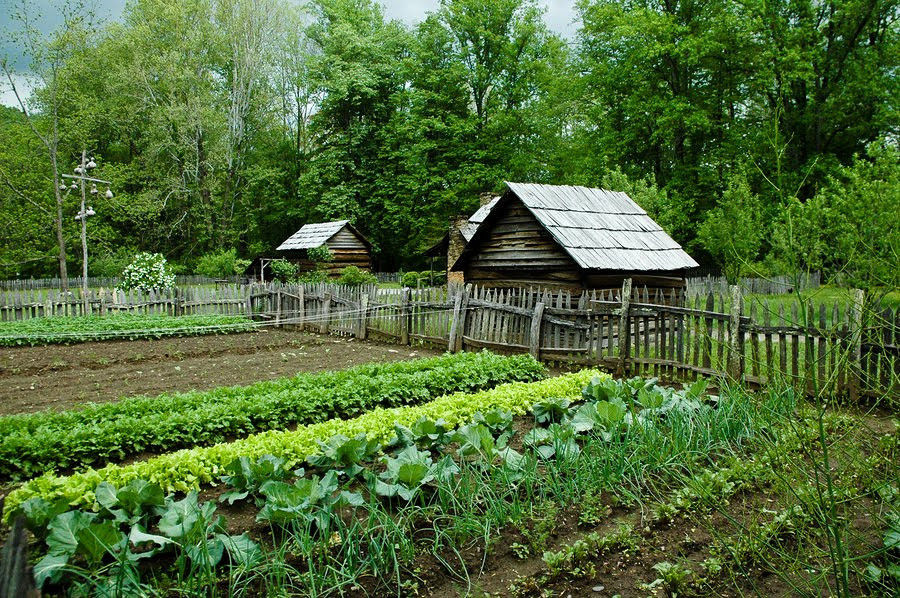Gardening When It Counts – Part 2
by A.K., Survival Blog:

(Continued from Part 1. This concludes the article.)
Garlic deserves a place in a survival garden. Both for it’s culinary attributes as well as medicinal qualities, garlic is a champ. Plant the largest nicest-looking cloves you can find, as you want your crop to have good genetics. After harvest, dry the crop carefully. Store the biggest heads of garlic in a separate place to replant for the next crop. Either soft neck or hard neck garlic will work. Hard neck garlic produces green scapes which need to be cut off; these can be used in cooking. Hard neck garlic is reputed to have better flavor than soft neck garlic. Soft neck garlic can be braided and will store longer. I honestly can’t tell the difference in terms of flavor and grow and enjoy both kinds. Note: Elephant garlic is not a true garlic. It is more closely related to leeks. It doesn’t have the same medicinal or storage qualities as traditional garlic. I don’t recommend it for a survival garden situation.
Onions are another champ in the garden. Their culinary impact on your meals is a real plus. You can harvest some onions fresh for immediate use. Reserve most for storage, for the non-growing season. Grow what are known as storage onions — not sweet onions such as Vidalia. Sweet onions are not meant for long-term storage.
What about greens? Nutrient rich and flavorful, greens such as kale, chard, and spinach are worthy of a space in a survival garden. They’re all easy to grow, can be harvested by the leaf (instead of pulling the whole plant) and will survive light frosts if covered. Spinach is finicky about hot weather and does better in cooler temps. Some varieties of spinach are better suited to warmer weather and others do well into light frosts. If your family isn’t used to eating these crops you’ll want to be sure to introduce them to these star veggies before a crisis situation. Lacinato kale is nicknamed “dinosaur kale” due to the appearance of the leaves which may induce kids to be willing to try it. I think it’s the most flavorful type of kale, as well. “Bright Lights” chard is colorful, flavorful and easy to grow.
GETTING CRUCIFEROUS
Cruciferous vegetables are a valuable contender in your garden for their nutritional attributes as well as taste. Broccoli is a nutritional powerhouse as well as a flavorful addition to meals. It is also pretty easy to grow. If possible, grow varieties that are noted for producing ample side-shoots so that after the main head is harvested you can continue to harvest smaller side-shoots for many weeks. This ups the amount of broccoli you can harvest from the same space and effort. Brussels sprouts are tasty, nutritious and last well into cool weather. They can also be stored under the proper conditions. Again, not everyone loves Brussels sprouts (I do). Make sure your family enjoys them before committing to growing them. I’d suggest sauteing them with garlic or using in a roasted veggie dish as two ways in which they are very enjoyable. Any cooking method which caramelizes them brings out their flavor.
Cabbage is another veggie worth growing, not just for use in coleslaw or stuffed cabbage but for long-term storage as sauerkraut.
Carrots are nutritionally valuable and also store well. Grow the ordinary well-known orange varieties such as Nantes and leave the cutesy baby carrots or odd-ball colors for times when it’s not so critical.
Beets are another nutritional powerhouse. Used fresh they can be roasted, made into soups, or eaten steamed or boiled. They will store under the proper conditions and be used into the off-season. Some enjoy beet greens (not me, I confess). I wouldn’t utilize too much of the planting for beet greens although when thinning is needed the seedlings removed can be used this way.
CORN REQUIRES SPACE
If you have enough space and it grows well in your area sweet corn can be a valuable crop. Again, it takes up a fair amount of room, is a “heavy feeder” and can be finicky. The crop can be eaten fresh, frozen, dried or canned with a pressure canner. Watch the dates for the varieties you choose to be sure that they will produce in your area.
The only peas that I consider worthy of the space and effort to grow them would be sugar snaps. As an edible podded pea that can be eaten fresh, cooked, freezes well etc. I think they are well worth growing. Traditional peas in which the pod is discarded take up a lot of room to produce very little in terms of actual food.
If your family enjoys them and they grow well in your climate, sweet peppers and eggplants are tasty additions to your garden which will allow you to jazz up your menus. Asian eggplants produce fruit faster than traditional Italian varieties so in an area with a shorter growing season these can be more dependable. If growing peppers in a shorter growing season locale stick to the varieties that are known to produce quickly such as “King of the North”. For some, hot peppers are a must. Again, they require the requisite warmth to do well so should only be grown if your climate is hot enough and your family truly enjoys them.
Cucumbers are a delightful addition to summer salads. They also pickle well which will add to the variety of foods your family will enjoy in the non gardening season. They’re not high in terms of nutrients or calories but if space allows are worth growing. I’d suggest trellising them to get them off the ground preventing rot and disease as well as a space-saver. Pickling cuke varieties are recommended as they will do double duty in terms of quickly producing lots of small tasty cukes for salads as well as for pickling.
Green or yellow beans are also a good addition to your garden. They’re easy to grow, rarely have disease or pest problems, produce a bumper crop for fresh eating and can be pickled, dried, frozen or pressure canned for storage. I recommend the bush bean varieties. Go for a reliable old-time favorite such as “Provider”.
Growing the kinds of vegetables noted in this article would be a good start in terms of maximizing your garden space and effort. Many of them will allow for both fresh eating as well as storage crops for the off-season. Some can be processed into sauerkraut, pickles, dilly beans and the like.
PERHAPS OTHER VEGGIES
What about other vegetables? You might notice that I left out a fair number that are commonly grown. Do they have a place in your garden? It depends. It depends on your space and time constraints. Lettuce can be worth growing if your family enjoys it in salads and you’ve got the space. I recommend growing loose leaf varieties in which you can harvest the outer leaves for use as needed while letting the plant continue to grow rather than harvesting the entire plant.
Loading...



